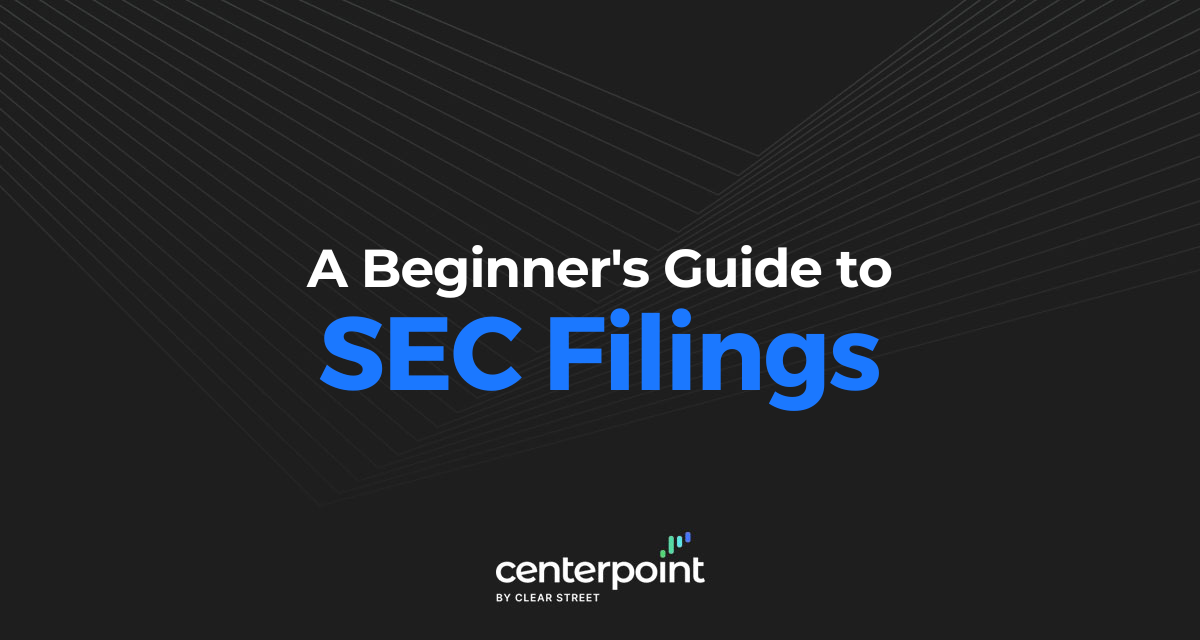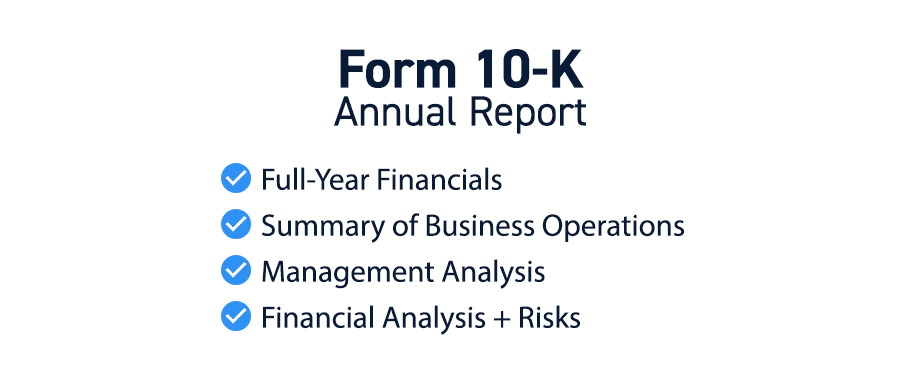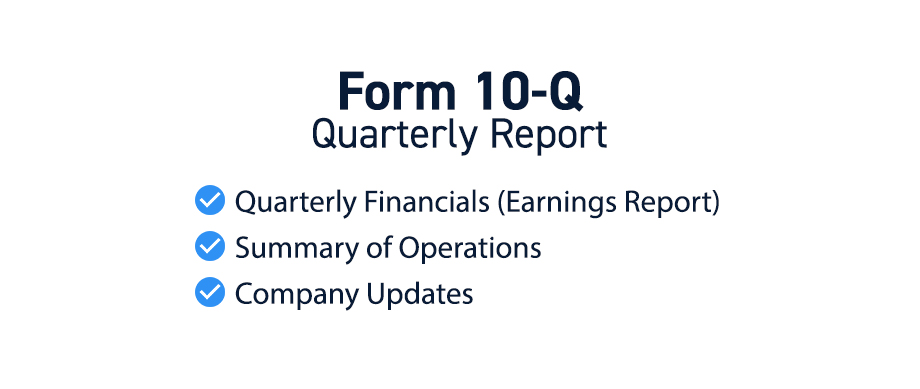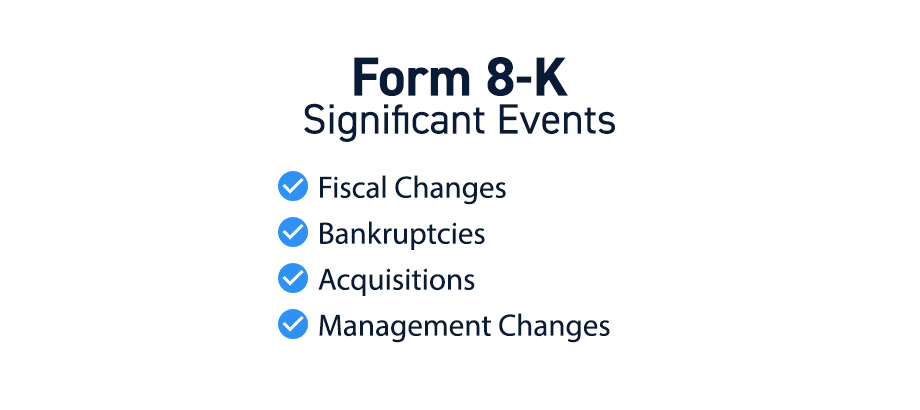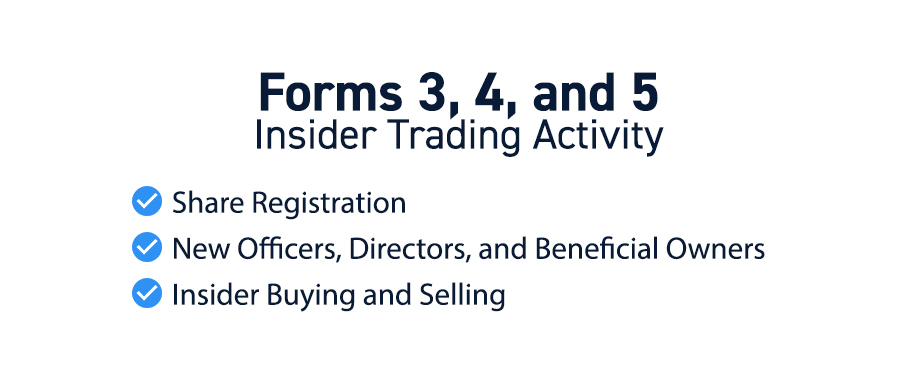The U.S. stock markets are regulated by the U.S. Securities and Exchange Commission (SEC). This independent federal governing body is responsible for ensuring the integrity and structure of financial markets, protecting investors and facilitating capital formation. Publicly traded companies are required to provide public information throughout the year on the operating performance of the business as well as material events that can impact its business. This information is provided by filing various forms with the SEC.
What is an SEC Filing?
SEC Filings are formal structured documents that are typically filed electronically with the SEC to meet compliance and regulatory requirements. This information provides investors and financial professionals details and insights into the underlying operations and the business strategy and risks so they can make informed investment decisions.
Who is obligated to file with the SEC?
All publicly traded companies are required to file certain documents with the SEC pertaining to operations and business performance. Additionally, certain insiders including beneficial owners who exceed a certain percentage of stock ownership are required to file with the SEC regarding stock transactions. Broker-dealers are also required to file with the SEC under regulatory guidelines.
Where can traders find SEC filings?
Most SEC filings can be accessed through the SEC’s database called EDGAR. The Electronic Data Gathering, Analysis and Retrieval system (EDGAR) contains millions of company and individual filings. It processes 3,000 filings a day providing up to 3 terabytes of data to the public and accommodating up to 40,000 new filers annually.
Why It’s Important to Pay Attention to SEC Filings
SEC filings provide key insights into the underlying companies as well as potential impact to share prices. Research oriented traders can easily get lost in the deep analysis of all things fundamental as well as quantitative data reviewing quarterly reports. Here are some reasons why it’s important to pay attention.
Discover Key Company Information
For traders who seek to develop their own opinions on a company, the SEC filings will provide key data needed to construct a solid narrative. Traders can learn the company’s initiatives, operating strategies, latest performance numbers, industry risks, assets and liabilities as well as material events and equity structure.
Get First Access to Company News
While traders usually rely on news scanners and press releases to get their stock market news, SEC filings present the most relevant and material company news directly from the source. When a material event is expected or occurs, a public company is required to file forms with the SEC. The information is also expected to be accurate and thorough. In many cases, the company will file with the SEC first before releasing an official company press release. This enables traders to get first access to company news.
Uncover Information That May Not Be in the Press Release
Company press releases tend to have a positive spin even if the news is negative. That’s the job of the Investor Relations department. However, SEC filings tend to be more critical of the risks and include more details in a subjective manner to avoid any regulatory scrutiny. For example, a company may report a ‘positive’ upside earnings report in a press release but the 10-Q filing with the SEC may include details of a potential risk of default with creditors if inventory values drop below covenant requirements. This takes some digging, but the payoff can be huge if discovered early.
Get The Most Accurate Data
Since the SEC is an enforcement agency as well, companies don’t want to invite scrutiny or investigations by posting false or inaccurate information. SEC filings are legal and official and carry penalties for misstatements. It takes more effort to check the share structure for a company through EDGAR than to find it on a search engine, but that is the price to pay for accurate information. Go to the source, not a third-party to get the official information.
Look for Red Flags and Opportunities
Researching SEC filings can sometimes reap opportunities by uncovering red flags, industry trends, future business plans and questionable practices. For example, a company may have issued a large chunk of warrants exercisable at a 75% discount to the current stock price which could double the float. This could trigger major dilution for shareholders as the expiration date nears, providing a potential trading opportunity. Or perhaps, there are details about a litigation royalty settlement with a smaller publicly traded company that commences next quarter. This could provide an investment opportunity in the smaller company.
Important SEC Filings to Understand
Now that you know of the important of SEC filings, here are the key types of filings to pay attention to. These filings tend to trigger stock price reactions when they hit the newswires.
Form 10-K is a company’s annual report. This is a fully comprehensive document detailing the company’s full-year performance, often including the fourth-quarter together. It provides a comprehensive narrative of the business operations as well as details of the management’s analysis of financial conditions and risks. With the exception of a combined report with the fourth-quarter, most of the financial information is in the rearview mirror from earlier 10-Q filings.
Form 10-Q is a company’s quarterly performance report. It can be submitted up to 45-days after the end of the fiscal quarter. This is arguably the most important and materially impactful filing for traders. It details the company’s financial performance for the fiscal quarter and includes the latest details on the operations, cash flow, income statement, balance sheet, debt, share structures, industry risks and legal proceedings. While the 10-Q is a more comprehensive filing that is usually audited, the 8-K filing usually occurs first.
Form 8-K is filed to announce a material or significant event, like the unaudited results of operations. These can be filed anytime and as often as needed. Events can range from acquisitions, mergers, bankruptcies, offerings to material impairments and executive changes. Usually a company has up to four-days to file an 8-K.
Form 3, 4, 5 are filed by corporate insiders (officers and directors) and beneficial owners (of more than 10% of a class of company shares). A Form 3 is filed within 10-days when an insider registers shares for the first time as they become an officer, director or beneficial owner. Corporate insiders are required to file a Form 4 within two-business days of selling or purchasing shares, reflecting changes in their ownership of shares. A Form 5 can be filed up to 45-days after the fiscal quarter for Form-4 transactions that were eligible for deferred reporting. Insider buying and selling is usually tracked by the more common Form 4 filings. Stock prices tend to spike when CEOs file a Form 4 indicating they purchased shares in the company.
Schedule 13-D is a required filing when a person or group acquires more than 5% of a voting class of stock. This can spike share prices especially when the beneficial owners are well-known money managers or activist groups.
Form 144 is filed to announce the intent of selling stock by insiders during any three month period. Its required to be filed when proceeds are expected to exceed $50,000 or 5,000 shares. It doesn’t apply to gifts or donations. Completed sales by insiders are usually followed up with a Form-4 detailing the transactions. Form 144 filings indicate insider selling and therefore can trigger a bearish reaction in the underlying stock.
SEC filings can be very significant for traders that are dedicated enough to digging through them in a timely manner. Many news feeds provide alerts when SEC filings are detected, which can save some legwork. Investors looking to go straight to the source for company information should explore the EDGAR database regularly.

